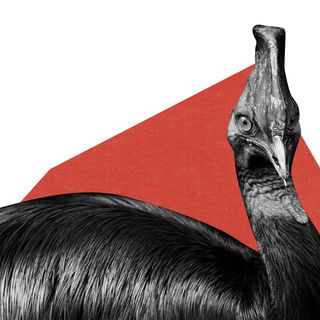A small blunder by an ecologist unleashed a “Russian doll”-like a set of stomach-eating parasites (bursting out of them as they eat it) onto a remote island in Finland.
What was the blunder? Well, just the release of one species of butterflies onto the island of Sottunga. That, in turn, released a trio of nested parasites, who just tagged along for the ride — nested in one another. Two of them were living inside another parasite, nestled inside some of the butterflies.
A new study published in Molecular Biology explores the aftermath of the blunder committed 30 years ago by ecologist Ilkka Hanski, who died in 2016. However, the butterfly species and the parasites are still thriving on the small, 27-square-kilometer island.
One of them — a parasitic wasp called Hyposoter horticola (“parasite 1”) — eats caterpillars from the inside out and emerges from the dead insect’s abdomen to spin a cocoon around its corpse. Within parasite 1, however, two more parasites dwell — a hyperparasitoid called Mesochorus cf. stigmaticus (“parasite 2”) and a bacterium known as Wolbachia pipientis (“parasite 3”). The presence of parasite 3 makes parasite 1 more susceptible to parasite 2.
Hanski had introduced Glanville fritillary butterflies into the island ecosystem to observe how its population would survive in the island’s harsh environment. As it appears, they have done a pretty good job of surviving. Experts are worried about their prospects, though, especially with the looming threat of climate change and the extreme weather events it is known to cause.
Related on The Swaddle:
Invasive, Exotic Tree Species Are Threatening the Animals of the Western Ghats
As caterpillars, the Glanville butterflies feed exclusively on just two meadow plants. Given how these plants are integral to their survival, anything happening to them endangers the butterfly population Hanski introduced.
The researchers worry that in case of a drought, the two plants the caterpillars feed on, can’t grow. And since they don’t eat anything else, they won’t really make it to the butterfly stage, and their population will suffer. “[U]nder a strong drought event… the population will crash,” Anne Duplouy from the University of Helsinki, who was the lead author of the study, told LiveScience. On the other hand, if the meadows overgrow, “bushes and trees take over. The host plants go extinct under tree covers,” she adds. It’s a delicate situation.
Despite the accidental introduction of the parasites, the butterflies have made it into the 21st century. Now, due to another human error — climate change — they might not be able to keep up, bringing this fascinating “Russian doll”-story to an abrupt end as the butterflies and the parasites all die out.
“The last few years, drought events have been more regular, and the population crashes… are stronger,” Duplouy notes. “The population in the south of Sottunga, in Föglö, went extinct a couple of years ago. Sottunga has been a very, very small population for many years now. We fear we might see the end of it very soon.”
“It would be a shame to lose it after 30 years of persistence.”




